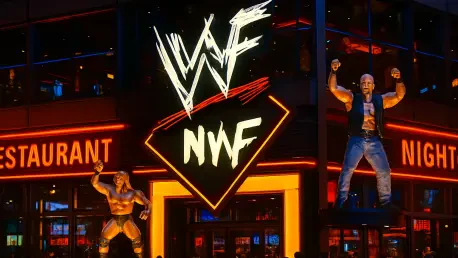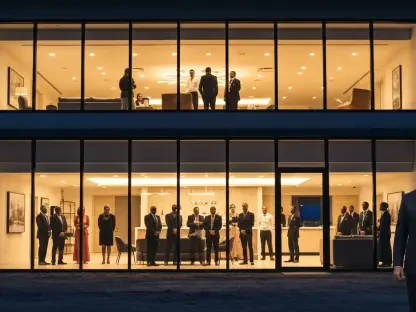In the heart of Times Square, a unique experiment in entertainment and dining emerged over two decades ago, capturing the raw energy of professional wrestling during its cultural zenith, and leaving an indelible mark on fans. This venture, known as WWF New York, was more than just a restaurant; it was a themed haven for fans of the World Wrestling Federation, now recognized as WWE, blending memorabilia, live event screenings, and a vibrant nightlife scene into one unforgettable package. Opening its doors in December 1999 within the iconic Paramount Theatre building, the venue quickly became a pilgrimage site for wrestling enthusiasts eager to immerse themselves in the larger-than-life world of their favorite superstars. From the blaring entrance music of iconic wrestlers to the walls adorned with historic artifacts, every corner of this establishment screamed passion for the sport. Though its run was short-lived, closing in early 2003, the memory of this wild era lingers among fans, sparking discussions and debates about its legacy in the annals of wrestling history. This article delves into the nostalgia surrounding this bold concept, exploring why it remains a cherished, if flawed, chapter for so many.
A Bold Experiment in Wrestling Culture
Tucked into one of the busiest intersections in the world, WWF New York stood as a testament to WWE’s ambition to extend its brand beyond the ring during a period of unprecedented popularity in the late ’90s and early 2000s. Launched under a lease secured by Vince McMahon in 1999, the venue combined elements of a restaurant, retail store, and nightclub, offering a Hard Rock Cafe-style experience infused with wrestling flair. Fans could watch live pay-per-view events and weekly shows like “Monday Night Raw” and “Sunday Night Heat,” surrounded by memorabilia that chronicled the sport’s storied past. Special events added to the allure, with concerts by notable acts and appearances by WWE stars turning visits into once-in-a-lifetime moments. The atmosphere was electric, designed to replicate the thrill of a live wrestling match, making it a cultural hub for fans who craved a deeper connection to the entertainment they adored. Despite its innovative approach, the venue faced challenges that would eventually lead to its rebranding to “The World” in 2002, following WWE’s name change, and its ultimate closure a year later under Linda McMahon’s direction.
Beyond the spectacle, WWF New York aimed to create an immersive environment where fandom could thrive in a tangible, real-world setting, a concept that was groundbreaking at the time. The venue’s design included arcade machines, a gift shop packed with exclusive merchandise, and a dining area where the menu featured quirky items like duck breast taco salad, all priced surprisingly affordably for its prime location, with entrees often under $10. For many younger visitors, stepping into this space felt like entering a wrestling fantasy, a place where the larger-than-life personas they watched on television came to life through decor and ambiance. Live screenings brought communal excitement, as crowds cheered and jeered together, replicating the energy of an arena. Yet, while the concept was lauded for its creativity, not all aspects lived up to the hype, particularly when it came to the dining experience, which would later become a point of contention among patrons. This duality of innovation and imperfection shaped the venue’s complex legacy in the eyes of those who walked through its doors.
Fan Memories and Mixed Reactions
Decades after its closure, WWF New York remains a topic of fervent discussion on social media platforms like Reddit, where wrestling fans share a blend of nostalgia and critique about their experiences at the Times Square hotspot. Many recount childhood visits with a sense of wonder, vividly remembering the thrill of browsing the gift shop for exclusive items or watching a pay-per-view event amidst a crowd of equally passionate fans. The venue’s ability to merge entertainment with dining created lasting memories, especially for those who traveled great distances to experience it during WWE’s peak cultural influence. Stories often highlight the unique atmosphere, from the wrestling-themed decor to the sound of entrance themes echoing through the space, evoking a visceral connection to the sport. These shared recollections paint a picture of a place that, for a brief moment, encapsulated the essence of wrestling fandom in a way few other venues could, leaving an indelible mark on those fortunate enough to visit during its short existence.
However, not all memories of WWF New York are bathed in a rosy glow, as many fans express disappointment over aspects that failed to meet expectations, particularly the food quality. Frequent comparisons to subpar chain restaurant fare surface in discussions, with some patrons even alleging food poisoning during high-traffic events like pay-per-view screenings. Despite affordable pricing for such a prime location, the culinary offerings often fell short, described by some as underwhelming or poorly prepared, casting a shadow over an otherwise exciting experience. This criticism reveals a stark contrast between the venue’s ambitious vision and its execution in certain areas, highlighting a missed opportunity to fully capitalize on the dining component of the themed experience. Yet, even with these drawbacks, the overarching sentiment among fans leans toward fondness, with many willing to overlook the negatives in favor of cherishing the unique environment and the era of wrestling it represented, underscoring the powerful pull of nostalgia.
Legacy of a Bygone Era
Reflecting on WWF New York, it’s clear that the venue was a pioneering, if imperfect, attempt to expand WWE’s reach into the hospitality and entertainment sectors during a time of immense popularity. Its closure in 2003, followed by the space’s transformation into a different establishment by 2005, marked the end of a bold experiment that captured the imagination of wrestling fans worldwide. The venue’s legacy endures through the stories and debates shared online, reflecting a collective yearning for spaces that blend fandom with real-world experiences. While flaws in execution, especially regarding food quality, tempered its success, the concept itself remains a symbol of WWE’s innovative spirit in engaging its audience beyond televised events. This duality of admiration and critique offers a nuanced perspective on a venture that, though short-lived, played a significant role in shaping how fans interacted with wrestling culture during a defining period.
Looking back, the story of WWF New York serves as a reminder of the potential for themed entertainment spaces to resonate deeply with passionate communities, even when not all elements align perfectly. For those who never experienced it, the tales of live screenings and star-studded events evoke a sense of what might have been if the concept had evolved further. Moving forward, the nostalgia surrounding this venue suggests an opportunity for WWE or similar organizations to revisit the idea of a wrestling-themed establishment, perhaps in a modern hub like Las Vegas, known for hosting major events. By addressing past shortcomings, such as prioritizing culinary excellence alongside immersive branding, a revival could tap into the enduring fanbase’s desire for connection. This historical chapter, while closed, opens the door to future innovations that could once again bring the thrill of wrestling into tangible, communal spaces for a new generation of enthusiasts.









